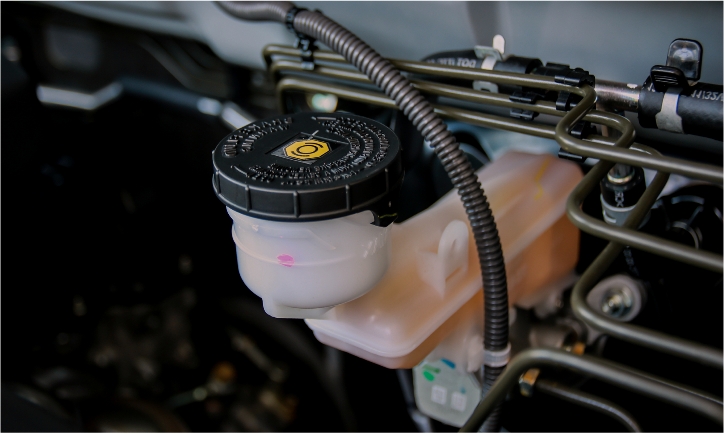
As a driver, you know the importance of having a vehicle that operates safely and efficiently. One of the key components of your car that requires proper maintenance is the brake system. The brake system is responsible for ensuring your car comes to a stop when needed, and the brake fluid reservoir is a crucial part of this system.
In this article, we will take a closer look at how to maintain a good brake fluid reservoir. We will discuss how to check the brake fluid level, how to bleed the brakes, and how to dispose of excess brake fluid.
Importance of Brake Fluid Container Maintenance
The brake fluid container is where the brake fluid is stored. This fluid is a critical component of your vehicle’s braking system, as it helps to transfer the force from your foot on the brake pedal to the brake calipers, which clamp down on the brake discs to slow or stop the car.
It is essential to maintain a good brake fluid reservoir to ensure that your brakes are working correctly. Over time, the brake fluid can become contaminated with moisture, which can reduce its effectiveness and cause damage to the braking system. In addition, if the brake fluid level drops too low, it can lead to a loss of braking power, which can be dangerous and potentially life-threatening.
Checking of Brake Fluid Level
One of the best practices for maintaining a good brake fluid reservoir is to regularly check the brake fluid level. You can do this by removing the cap from the reservoir. Many newer vehicles have translucent caps that allow you to see the fluid level. However, in older vehicles, you will need to unscrew the metal reservoir cap to access the fluid.
While checking the brake fluid level, it is also a good idea to clean the reservoir cap. This helps to keep the fluid fresh and clean and prevents contaminants from entering the reservoir. It is also an opportunity to check for any leaks in the brake system. If you notice any signs of leaks, it is time to call in a professional mechanic.
Before you begin inspecting your brake fluid, it is important to wear protective gloves and sunglasses. Also, be sure to park your vehicle on a level surface to avoid any spills.
Bleeding the Brakes
Bleeding the brakes is another essential part of maintaining a good brake fluid reservoir. This process involves removing air from the brake lines to ensure that the brakes are functioning correctly. Bleeding the brakes can be done manually or using a vacuum bleeder.
The first step in the process is to remove the master cylinder reservoir cap using a small turkey baster. Next, place a clear plastic hose over the bleeder screw, and use a hand-operated vacuum gun to create suction.
Before you begin, clean the caliper and brake fluid reservoir to reduce the possibility of cross-contamination. You can also use heavy-bearing grease to help prevent deceptive bubbling.
Once the reservoir is cleaned, fill it with new brake fluid, about 16 ounces, using a small, disposable bottle. Be sure to check the fluid levels in the master cylinder reservoir before bleeding to ensure that the caliper will not be overfilled.
After bleeding the caliper, pull out the master cylinder to eliminate the excess fluid, which may need to be done a few times.
Dispose off Excess Brake Fluid
If you have excess brake fluid, you need to know how to dispose of it safely. Brake fluid is a flammable substance, so you should never pour it down the drain, and it should be kept away from pets and children.
There are many places to dispose of old brake fluid safely, such as in a landfill, a recycling facility, or as hazardous waste. However, it is essential to ensure that you do not pour it into a septic tank, as this can pollute the groundwater
